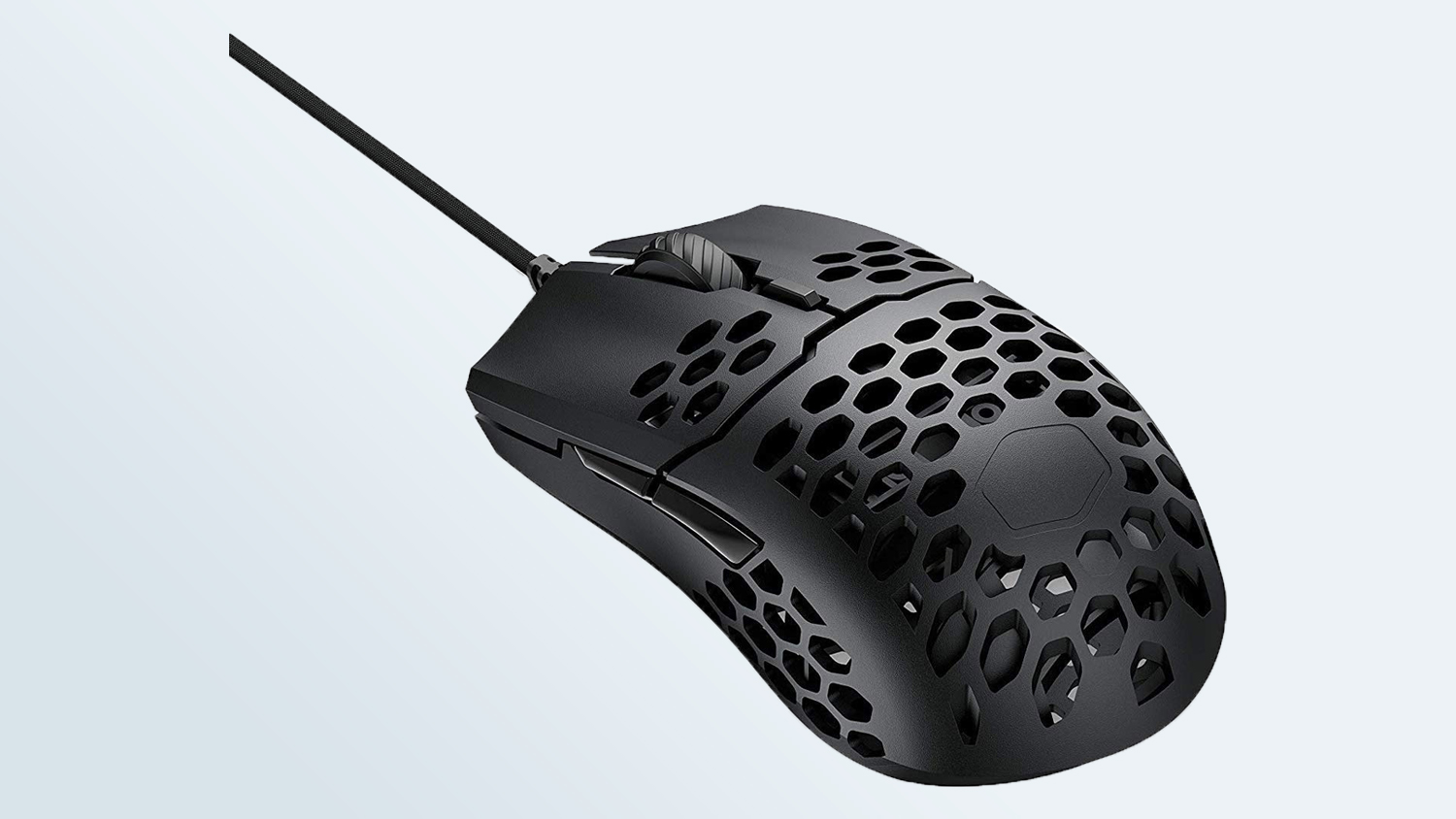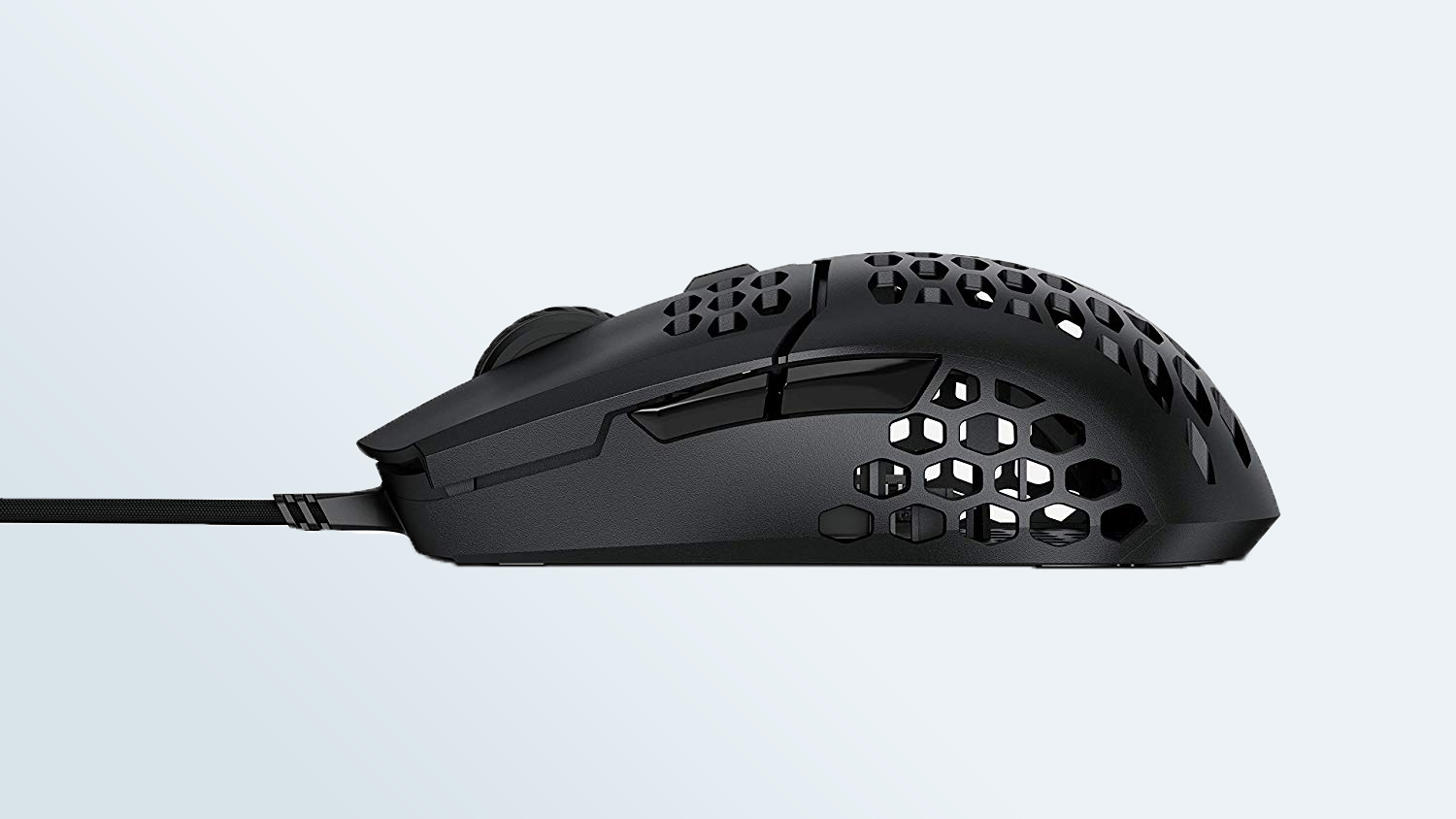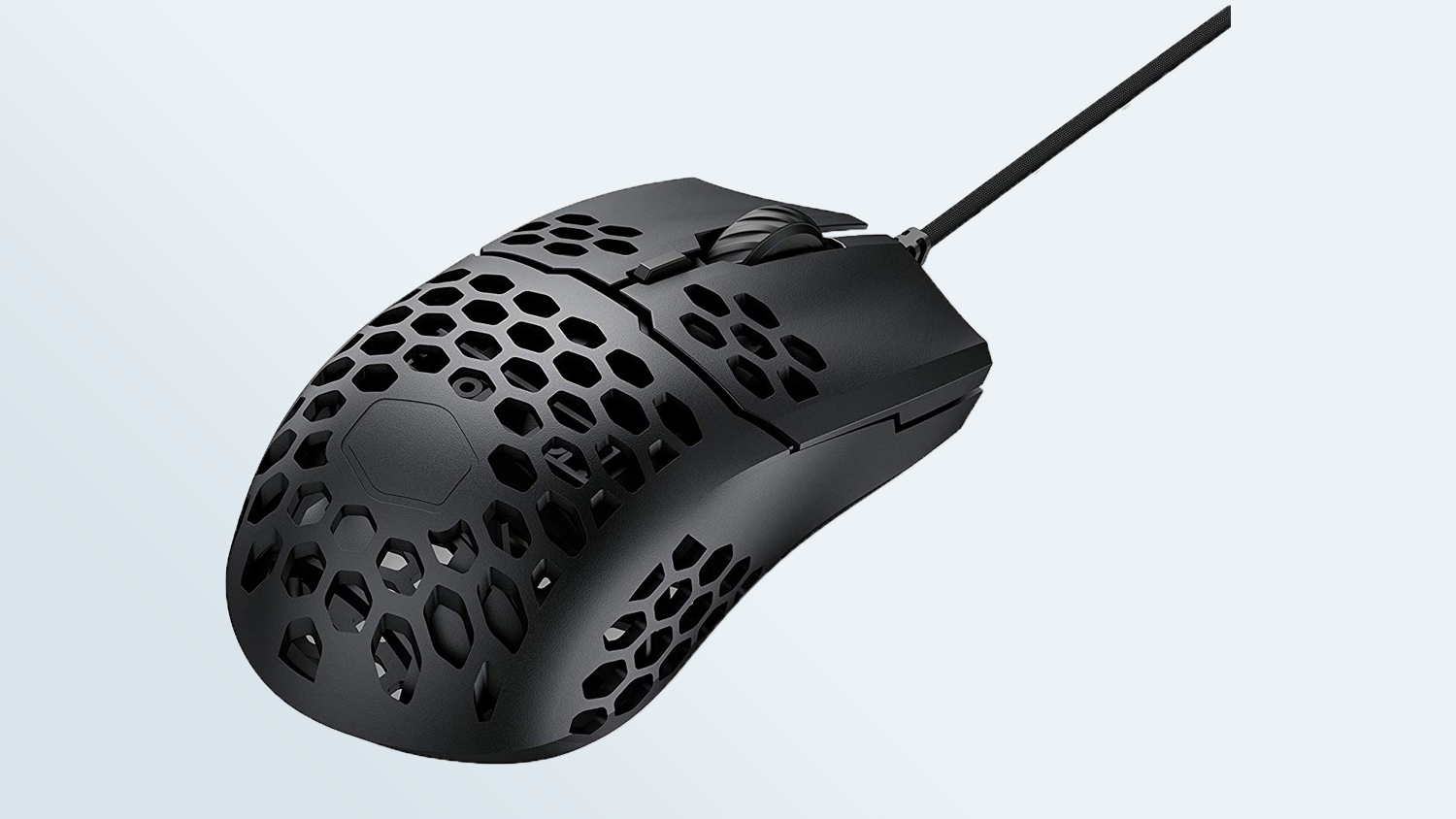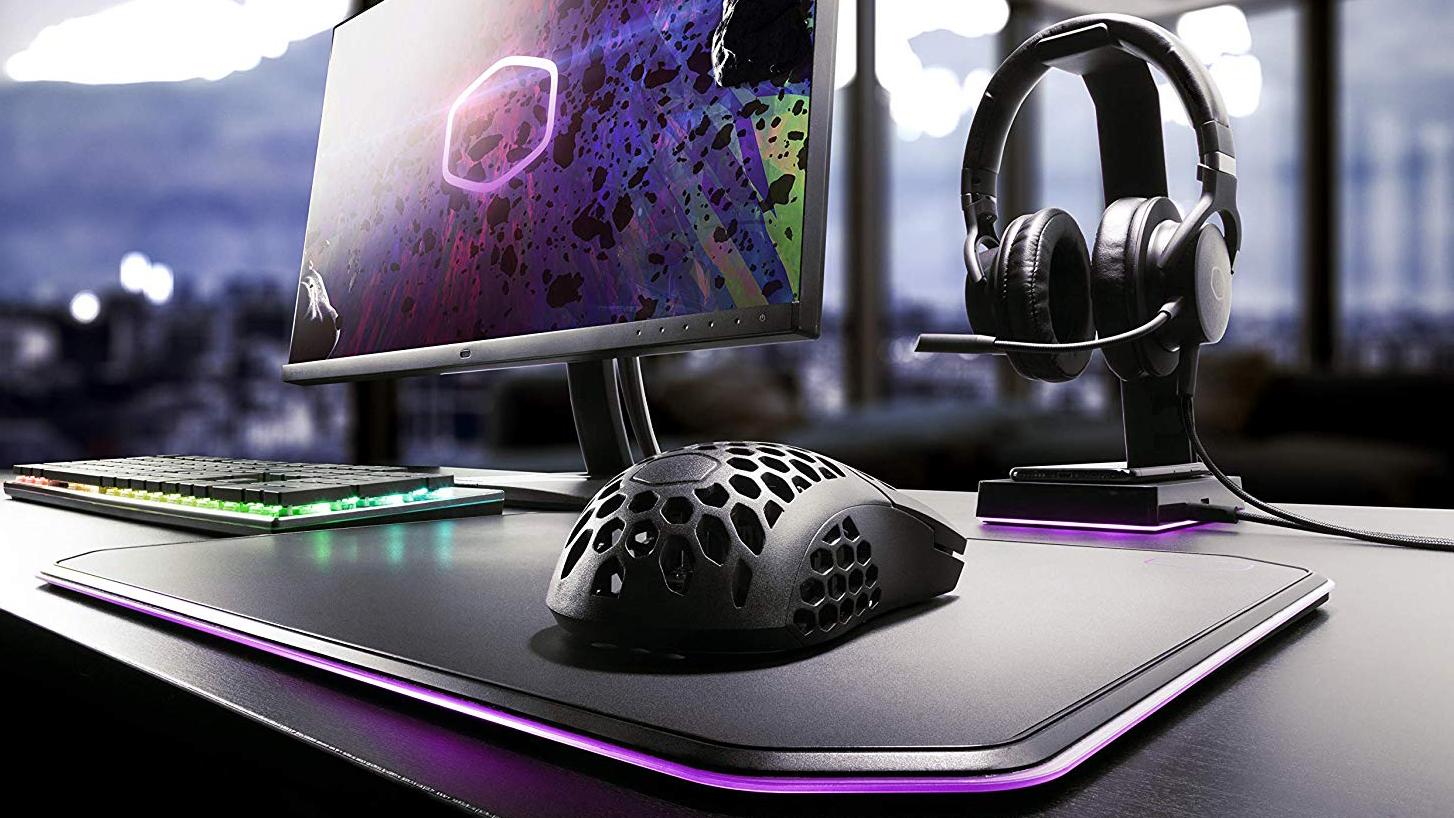Tom's Guide Verdict
The Cooler Master MM710 is, without a doubt, the ugliest mouse I have ever reviewed, but it's very lightweight and works well enough.
Pros
- +
Extremely light
- +
Good performance
- +
Novel concept
Cons
- -
Unattractive design
- -
Feels insubstantial
- -
Bare-bones software
Why you can trust Tom's Guide
I always commend peripheral manufacturers for trying something new. The Cooler Master MM710 ($50) is unlike any other gaming mouse on the market, with a hollow, honeycombed design that makes it one of the lightest peripherals out there.
It's a good thing that the MM710 is novel, though, because it is also, without a doubt, the ugliest mouse I have ever reviewed. While the dozens of empty hexagons aren't quite as uncomfortable as they look, the design never grew on me, and I found myself wishing again and again for a more solid chassis.
There's something to be said for a mouse that weighs only 1.9 ounces, and the MM710 performs just as well as any other device once you get a game up and running. But a bizarre design and a lackluster software suite make the MM710 a tough recommendation, unless you really, really want something different.
Cooler Master MM710 design
To give credit where it's due, I've never seen another mouse quite like the MM710. It's literally full of holes. (However, this design is becoming more and more common, with brands from Glorious PC Gaming Race to Logitech trying to capitalize on the trend.) Rather than covering a sensor with a solid layer of plastic, the MM710 jams all of its internal hardware near the top of the mouse, leaving the bottom totally hollow. To lighten the device even further, the chassis is full of empty hexagons, giving the whole mouse a honeycombed appearance. The end result is a mouse without a whole lot of mouse in it.

How much you like this design will depend on how light you like your mice. I personally prefer mine with a bit of heft, so the MM710 was never going to be a good fit for me. But even then, a weight of 1.9 ounces is pushing things. The Logitech G305 is one of the lightest mice on the market — and wireless, to boot — and even that mouse weighs 3.4 ounces. Having a light mouse lets you move it around easily; having an extremely light mouse lets you overshoot your target easily.

To give credit where it's due, I've never seen another mouse quite like the MM710.
Still, like most mice, the MM710 is easy enough to handle once you get used to its particular feel. What bugs me a little more is that the device claims to be ambidextrous, even though it's geared mostly toward right-handed players. While the mouse is fairly symmetrical, it has two thumb buttons on the left side, and nothing on the right. The claim on the box that the MM710 is "ambidextrous" feels a little misleading.
Otherwise, the button layout is fine, although the mouse is pretty small (4.6 x 2.5 x 1.5 inches), so things can get cramped. There's a left button, a right button, a clickable scroll wheel and a very, very small dots-per-inch (DPI) sensitivity switcher. Everything is where it's supposed to be, although it can be hard to get a fix on the thumb buttons, depending on how big your hand is.
Get instant access to breaking news, the hottest reviews, great deals and helpful tips.
Cooler Master MM710 features
The biggest feature of the MM710 is its odd design, which is going to be a strictly love-it-or-hate-it gut check. In terms of features you can manipulate, there's the Cooler Master MasterPlus software, which mostly gets the job done.

When I first installed MasterPlus, it prompted me to update the mouse's firmware. (Technically, it prompted me to update my "keyboard's" firmware, even though I had a mouse, but I digress.) After a series of somewhat confusing prompts (it doesn't tell you that you have to unplug and replug your mouse for it to work properly), the software crashed and wouldn't restart again until I killed the process in Task Manager. My MasterPlus experience was not off to a great start.

Once I got it up and running, though, it worked pretty well. You can reprogram the thumb buttons, customize up to five DPI levels (up to 16,000) or toy around with more advanced features, such as polling rate and angle snapping.
One criticism of the program is that you can only program up to five game profiles at a time, and hunting down the games' executable files by yourself is a bit of a pain. (Most programs scan your system and organize your games list for you.) There's also no RGB lighting, but since light weight and low price were the primary concerns here, that's not really something I would have expected.
- These are the best gaming mouse pads of 2019
Cooler Master MM710 performance
Because the mouse is so small and light, I often overshot where I intended to go and then had to compensate.
From a moment-to-moment gameplay perspective, the MM710 performed well. I ran the mouse through Overwatch, Age of Empires II: Definitive Edition, Thronebreaker: The Witcher Tales, and Final Fantasy XIV. The mouse parsed every command, from running through an MMO skill rotation to fielding a Gothic army against the Byzantines, correctly and quickly.

My issue with gameplay was a physical one: Because the mouse is so small and light, I often overshot where I intended to go and then had to compensate. This isn't really a big deal in a game like Thronebreaker, where you can take as much time as you want to plan out your next move. But it did lead to a few near-disasters in Overwatch and Age of Empires, where split-second decision-making can mean the difference between winning and losing a game.
I don't want to overstate the case; this wasn't happening every other click, and I'm sure I'd get used to it over time. But the mouse is much, much lighter than any other I've used, which can make it hard to handle.
Bottom line
As much as I give Cooler Master credit for trying something new, I don't think the MM710 is going to work for most people. The honeycomb design is unattractive, and the benefits of having such a light mouse are questionable. Throw in some semistable software, and the MM710 starts to look like a pretty big ask, even for $50.
On the other hand, the mouse isn't terrible by any stretch. The sensor is excellent, the performance is solid and, love it or hate it, you're not likely to see another mouse quite like it. See if you can get your hands on one before you decide whether to buy it. You'll know in about 10 seconds whether it's for you.

Marshall Honorof was a senior editor for Tom's Guide, overseeing the site's coverage of gaming hardware and software. He comes from a science writing background, having studied paleomammalogy, biological anthropology, and the history of science and technology. After hours, you can find him practicing taekwondo or doing deep dives on classic sci-fi.

